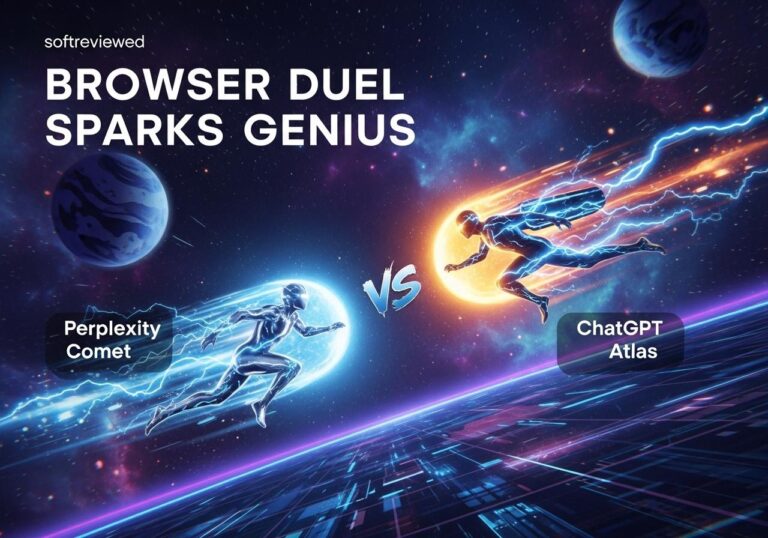The artificial intelligence sector is constantly buzzing with innovation, and the latest stir comes from DeepSeek AI with the release of their updated reasoning model, DeepSeek-R1-0528. Quietly launched in late May 2024, this “minor trial upgrade,” as the company initially termed it, has quickly captured the attention of developers and AI enthusiasts alike. With promises of improved benchmark performance, enhanced front-end capabilities, significantly reduced hallucinations, and new support for JSON output and function calling, R1-0528 is positioning itself as a noteworthy advancement in the open-source AI domain. But is this just another iteration, or does it signify a more substantial leap forward? Let’s explore what DeepSeek-R1-0528 brings to the table.
What’s All the Buzz About This “Minor Upgrade”?
Despite its modest announcement, often just a note in a WeChat group or a quiet drop on Hugging Face, the DeepSeek-R1-0528 update has generated considerable excitement. This isn’t just about a few tweaks; initial reports and developer testing suggest tangible improvements that could narrow the gap with some of the leading proprietary models from giants like OpenAI and Google.
🎯 Pinpointing the Key Enhancements
So, what exactly makes DeepSeek-R1-0528 stand out? The company and early adopters have highlighted several key improvements:
- 📌 Improved Benchmark Performance: Across various evaluations, including mathematics, programming, and general logic, R1-0528 is showing significant gains. For instance, its accuracy on the AIME 2025 test reportedly jumped from 70% to 87.5%.
- 📌 Enhanced Front-End Capabilities: Users can expect better performance in tasks like front-end code generation.
- 📌 Reduced Hallucinations: DeepSeek claims a 45-50% reduction in “hallucinations” – those instances where AI produces false or misleading information – particularly in rewriting and summarization tasks. This is a crucial step towards more reliable AI.
- 📌 Supports JSON Output & Function Calling: These are vital features for developers, allowing for more structured data interaction and the ability for the model to interact with external tools and APIs. This greatly expands its utility in complex applications.
- 📌 Smarter Reasoning: The update boasts significantly improved depth of reasoning and inference capabilities. This is attributed to increased computational resources and algorithmic optimization during post-training. The model now uses an average of 23K tokens per question in the AIME test set, up from 12K, indicating a deeper “thinking” process.
- 📌 Creative Writing & Role-Playing: The model also showcases enhanced abilities in creative writing for essays and novels, as well as improved role-playing capabilities.
🤔 Beyond the Hype: Understanding the Core Technology
DeepSeek-R1-0528 is described as a large language model (LLM) with a massive 671 billion parameters, though only 37 billion are active during an inference pass. This “Mixture-of-Experts” (MoE) architecture is a key strategy for achieving high performance while managing computational costs. The model is an evolution of DeepSeek’s V3 backbone, incorporating MoE scaling and training tweaks.
A significant aspect of DeepSeek’s approach is its commitment to open source. The weights for DeepSeek-R1-0528 are available on Hugging Face, released under an MIT license. This allows developers and researchers worldwide to access, use, and build upon the model, fostering a collaborative environment for AI advancement. This open approach is a stark contrast to the proprietary nature of many leading AI models.
DeepSeek has emphasized that the “chain-of-thought” from R1-0528 will be important for both academic research on reasoning models and industrial development focused on small-scale models.
From Humble Beginnings: The DeepSeek Story
To fully appreciate the significance of DeepSeek-R1-0528, it’s helpful to understand the company behind it. DeepSeek AI is a relatively young player, but it has made a considerable impact in a short time.
A Quick Trip Down Memory Lane: DeepSeek AI’s Journey
Founded in July 2023, Hangzhou DeepSeek Artificial Intelligence Basic Technology Research Co., Ltd. (doing business as DeepSeek) is a Chinese AI company based in Hangzhou, Zhejiang. It is owned and funded by the Chinese hedge fund High-Flyer, with Liang Wenfeng, co-founder of High-Flyer, serving as CEO for both entities.
DeepSeek’s mission has been to develop powerful, yet cost-effective, large language models. They made waves with their initial R1 model in January 2024, which challenged the notion that cutting-edge AI required astronomical computing resources and investment. The company has consistently focused on an open-source philosophy, releasing several models prior to R1-0528, including:
- DeepSeek Coder (November 2023)
- DeepSeek-LLM series (November 2023)
- DeepSeek-MoE models (January 2024)
- DeepSeek-Math models (April 2024)
- DeepSeek-V2 (May 2024)
This rapid succession of releases demonstrates DeepSeek’s aggressive development pace and commitment to innovation.
Where R1-0528 Fits in the Grand Scheme
DeepSeek-R1-0528 is presented as a “minor version upgrade” to the R1 model. While some speculate it might be what an “R2” (the anticipated successor to R1) was intended to be, perhaps released under the R1 banner due to competitive pressures or to manage expectations, DeepSeek itself has not labeled it as such. The community eagerly awaits news of a full R2, but R1-0528 serves as a significant stepping stone, showcasing substantial improvements in reasoning, coding, and overall performance. It builds upon the foundation of their V3 model, further refining its capabilities.
Putting R1-0528 to the Test: Performance and Benchmarks
The true measure of any AI model lies in its performance. DeepSeek-R1-0528 has been subjected to various benchmarks, and the initial results are promising, particularly for an open-source model.
📊 By the Numbers: How R1-0528 Stacks Up
DeepSeek has shared impressive benchmark results for R1-0528, highlighting its advancements over the previous R1 version:
| Category | Benchmark (Metric) | DeepSeek R1 | DeepSeek-R1-0528 |
|---|---|---|---|
| General | MMLU-Redux (EM) | 92.9 | 93.4 |
| MMLU-Pro (EM) | 84.0 | 85.0 | |
| GPQA-Diamond (Pass@1) | 71.5 | 81.0 | |
| Humanity’s Last Exam (Pass@1) | 8.5 | 17.7 | |
| Code | LiveCodeBench (2408-2505) (Pass@1) | 63.5 | 73.3 |
| Codeforces-Div1 (Rating) | 1530 | 1930 | |
| SWE Verified (Resolved) | 49.2 | 57.6 | |
| Aider-Polyglot (Acc.) | 53.3 | 71.6 | |
| Math | MATH (Pass@1) | 76.0 | 84.6 |
| AIME 2024 (Pass@1) | 85.0 | 87.5 | |
| AIME 2025 (Pass@1) | 70.0 | 87.5 | |
| TheoremQA (Pass@1) | 58.7 | 75.0 |
Source: Hugging Face, DeepSeek-R1-0528 Model Card
These numbers indicate substantial improvements, particularly in coding and mathematical reasoning. The company states its overall performance is now “approaching that of leading models, such as O3 and Gemini 2.5 Pro.”
Real-World Prowess: Coding, Reasoning, and Beyond
Benchmarks provide a standardized measure, but real-world application is key. Developers have noted DeepSeek-R1-0528‘s impressive coding capabilities. On the Live CodeBench leaderboard (as of late May 2024), it secured a strong position, ranking as the top Chinese model for coding and trailing only a few OpenAI models. Its Pass@1 score of 73.1 on Live CodeBench is a testament to its proficiency.
Beyond coding, its enhanced reasoning shines in complex tasks. The significant jump in AIME (American Invitational Mathematics Examination) scores, for example, underscores its improved ability to tackle challenging problems that require deep, multi-step thinking. The increased token usage per question (23K vs. 12K) in these tests suggests a more thorough and nuanced approach to problem-solving.
Users have also reported positive experiences with its front-end code generation, creative writing, and even its ability to perform in role-playing scenarios. The reduction in hallucinations is another critical real-world benefit, making the model more trustworthy for practical applications.
The Ripple Effect: What R1-0528 Means for the AI World
The release of DeepSeek-R1-0528 isn’t just an isolated event; it contributes to broader trends and discussions within the AI community.
🚀 Boosting Open Source Innovation
Perhaps one of the most significant impacts of DeepSeek’s work, including the R1-0528 update, is the continued vitalization of the open-source AI movement. By providing powerful models with open weights, DeepSeek empowers a global community of developers and researchers. This can lead to:
- ✅ Accelerated Innovation: More eyes on the code and more diverse experimentation can lead to faster breakthroughs.
- ✅ Increased Accessibility: Smaller companies, academic institutions, and individual developers can access state-of-the-art AI without prohibitive licensing fees.
- ✅ Transparency and Scrutiny: Open models can be more easily audited for biases, security flaws, and other potential issues.
- ✅ Customization: Developers can fine-tune open-source models for specific tasks and industries, leading to more tailored AI solutions.
DeepSeek-R1-0528, with its near-proprietary-level performance in some areas, demonstrates that open-source AI is not just catching up but actively competing.
🧐 Challenges and Considerations on the Horizon
While the advancements are exciting, they also come with considerations:
- ⛔️ Computational Resources: While DeepSeek is known for efficiency, running and fine-tuning a 671B parameter model (even with an MoE architecture) still requires significant computational power. This can be a barrier for some.
- ⛔️ Responsible AI Development: As open-source models become more powerful, ensuring their responsible use becomes paramount. Mitigating potential misuse and addressing ethical concerns remain ongoing challenges for the entire AI community.
- ⛔️ The “R2” Question: The anticipation for DeepSeek’s R2 model remains high. While R1-0528 is a strong update, the community is eager to see what a full-fledged next-generation model from DeepSeek will deliver.
🗣️ What the Experts are Saying
The reception from the AI community has been largely positive, with a sense of excitement around the capabilities demonstrated by DeepSeek-R1-0528.
One developer on a tech forum noted, “The coding output from R1-0528 is surprisingly clean. It’s definitely a step up and great to see this level of performance in an open-source model.”
Another AI researcher commented, “DeepSeek’s focus on reasoning is crucial. The AIME benchmark improvements are particularly impressive and point towards genuine progress in tackling complex logical tasks, not just pattern matching.”
However, some maintain a degree of caution. An industry analyst mentioned, “While DeepSeek is making remarkable strides, the true test will be widespread adoption and its ability to perform consistently across a diverse range of real-world, messy data. The reduction in hallucinations is a good sign, but ongoing vigilance is needed.”
DeepSeek themselves stated on Hugging Face, “We believe that the chain-of-thought from DeepSeek-R1-0528 will hold significant importance for both academic research on reasoning models and industrial development focused on small-scale models.” This highlights their ambition for the model’s impact.
Peeking into the Crystal Ball: What’s Next for DeepSeek and AI Reasoning?

With DeepSeek-R1-0528 now available, the AI community is already looking towards the future. What can we expect next from DeepSeek, and how might this update influence the trajectory of AI reasoning models?
The Road Ahead: Anticipating Future Developments
The most immediate anticipation revolves around DeepSeek R2. While R1-0528 is a significant upgrade, it’s still an iteration of the R1 series. An R2 model would likely involve more fundamental architectural changes and potentially even greater performance leaps. DeepSeek has not yet provided an official timeline for R2, but the progress shown in R1-0528 certainly whets the appetite.
We can also expect continued refinements in areas like:
- ➡️ Further reduction in hallucinations: This remains a critical area for all LLMs.
- ➡️ Improved efficiency: Making these powerful models even more accessible by reducing computational demands.
- ➡️ Enhanced multi-modal capabilities: While R1-0528 focuses on text and code, future models may integrate other data types more deeply.
- ➡️ Specialized versions: DeepSeek has already released models for specific domains like coding and math. This trend may continue, with highly optimized models for various industries or tasks.
Synergies and Integrations: The Bigger Picture
The advancements in models like DeepSeek-R1-0528 don’t happen in a vacuum. They will likely integrate with other technologies and fuel new types of applications. The improved function calling and JSON output capabilities, for instance, make R1-0528 more adept at acting as the “brain” for complex, multi-step automated workflows and more sophisticated AI agents.
As open-source models become more powerful, we might see a flourishing ecosystem of tools and platforms built around them, making it easier for developers to deploy and manage these models. The competition spurred by high-performing open-source alternatives also pushes proprietary model developers to innovate and potentially adjust their pricing, benefiting the entire market.
The Final Byte: Making Sense of DeepSeek-R1-0528
DeepSeek-R1-0528 represents a compelling step forward in the world of open-source artificial intelligence. Its enhanced reasoning, coding proficiency, and reduced hallucination rates, all while maintaining an open-source ethos, make it a valuable asset for developers and researchers. While perhaps not the full-blown “R2” some were anticipating, it’s far more than a trivial update.
This release underscores the rapid pace of innovation in AI, particularly from companies like DeepSeek that are challenging established norms with efficient and powerful open-source alternatives. For anyone interested in the cutting edge of AI, especially in reasoning and coding applications, DeepSeek-R1-0528 is a development worth watching and experimenting with. You can try it now via their official chat interface or access the API through their documentation. The journey of AI is one of continuous iteration and improvement, and R1-0528 is a bright marker on that path.







